pH Sensitivity of Colorants in Flower Petals
Many compounds in plants are pH sensitive and can be used as acid/base indicators (Shakhashiri, B. Z. Chemical Demonstrations; The University of Wisconsin Press: Madison, WI, 1989; Volume 3, pp. 50-57). For example, there have been many lab experiments using red cabbage as a pH indicator. Some flowers can also be used to determine the pH of a substance, and below you will see a few examples of this. We found that pink or purple flowers showed a large color change, but yellow flowers such as daffodils and dandelions did not.
Experiment:
1. Samples were cut into small pieces and placed into three test tubes labeled H+, neutral, and OH-
2. A small amount of water was added (about 2-3mL)
3. 4-5 drops of concentrated hydrochloric acid or 50% sodium hydroxide was added and the test tube was mixed
LEFT: Quince RIGHT: Red Tulip
1.jpg)
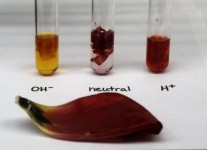 LEFT: Daffodil RIGHT: White Lilac
LEFT: Daffodil RIGHT: White Lilac
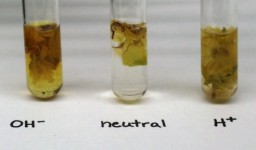
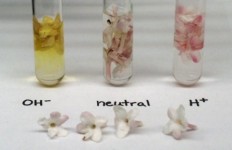 LEFT: Dandelion RIGHT: Redbud Tree
LEFT: Dandelion RIGHT: Redbud Tree
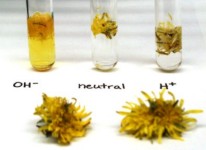
 LEfT: Rhododendron (fresh) RIGHT: Rhododendron (dried for a year)
LEfT: Rhododendron (fresh) RIGHT: Rhododendron (dried for a year)
1.jpg)
2.jpg) LEFT: Apple Blossom RIGHT: Wild Geranium
LEFT: Apple Blossom RIGHT: Wild Geranium

 LEFT: Yellow Iris RIGHT: Purple Iris
LEFT: Yellow Iris RIGHT: Purple Iris
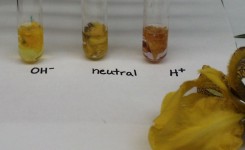
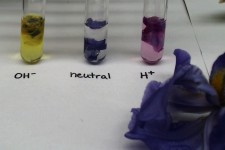 LEFT: Purple Carnation (dyed) RIGHT: Phlox (Sweet Williams)
LEFT: Purple Carnation (dyed) RIGHT: Phlox (Sweet Williams)
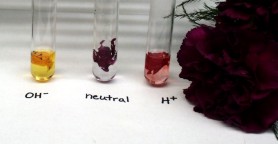
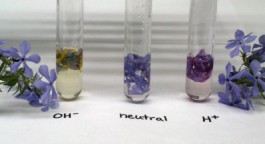 LEFT: Red Cabbage RIGHT: Bee Balm
LEFT: Red Cabbage RIGHT: Bee Balm

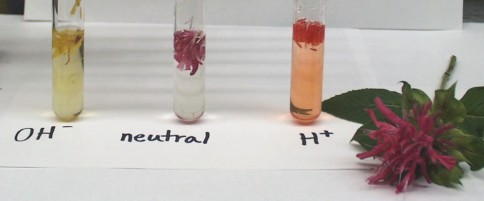 LEFT: Peony (outer petal) RIGHT: Peony (inner petals)
LEFT: Peony (outer petal) RIGHT: Peony (inner petals)

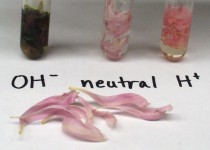 Other references:
Kanda, Naoki; Asano, Takayuki; Itoh, Toshiyuki; Onoda, Makota. Preparing "Chameleon Balls" form Natural Plants: Simple Handmade pH Indicator and Teaching Material for Chemical Equilibrium, J. Chem Educ. 1995 72 1131.
Huntress, Ernest H. The Chemistry of the Red and Blue Pigments of Flowers and Fruits. J. Chem Educ. 1928 5 1392, 1615.
Geissman, T. A. Flower Coloration. J. Chem Educ. 1941 18 108.
Other references:
Kanda, Naoki; Asano, Takayuki; Itoh, Toshiyuki; Onoda, Makota. Preparing "Chameleon Balls" form Natural Plants: Simple Handmade pH Indicator and Teaching Material for Chemical Equilibrium, J. Chem Educ. 1995 72 1131.
Huntress, Ernest H. The Chemistry of the Red and Blue Pigments of Flowers and Fruits. J. Chem Educ. 1928 5 1392, 1615.
Geissman, T. A. Flower Coloration. J. Chem Educ. 1941 18 108.
1.jpg)





1.jpg)
2.jpg)










1.jpg)





1.jpg)
2.jpg)










No comments:
Post a Comment